Review: Bontrager's Incredibly Stiff & Expensive XXX MTB Shoes
Bontrager's Triple X mountain bike shoe is their top of the line and most high-performance XC shoe. It's the shoe that their elite XC and cyclocross teams use in competition and it is available to mere mortals like us as well. The shoe is designed with light, stiff, and fast in mind and, according to Trek, offers a "no-compromise" performance.
However, we know that there's always a compromise. The Bontrager XXX shoes cost a wallet burning $400. They are available in sizes 36-48, including most half sizes and in an all black, white/azure, or the extra-loud nautical navy/radioactive pink shown here.
However, we know that there's always a compromise. The Bontrager XXX shoes cost a wallet burning $400. They are available in sizes 36-48, including most half sizes and in an all black, white/azure, or the extra-loud nautical navy/radioactive pink shown here.
Triple X MTB Shoe Details
• OCLV Carbon outsole
• Boa IP1 Dials
• Reinforced toe box
• Ultra stiff (14/14 stiffness index)
• "Gnar-guard" toe box reinforcement
• Colors: black, white/azure, navy/radioactive pink
• 605g (pair, size 43.5)
• $400 USD
• www.trekbikes.com
• OCLV Carbon outsole
• Boa IP1 Dials
• Reinforced toe box
• Ultra stiff (14/14 stiffness index)
• "Gnar-guard" toe box reinforcement
• Colors: black, white/azure, navy/radioactive pink
• 605g (pair, size 43.5)
• $400 USD
• www.trekbikes.com
Construction
The Triple X MTB shoe gets a 14 out of 14 on Bontrager's stiffness index, a number that's achieved thanks to the 100% OCLV carbon sole. The shoes have a reinforced toe and heel area, and there are Tachyon rubber lugs for traction and toe spikes for deeper mud and muck. The tongue of the shoe is an asymmetrical design that wraps around and over the top of the foot, from the medial to the lateral forefoot arch, for comfort. Additionally, there are neoprene flex points at the top of the tongue and the back of the shoe to help reduce pressure points.
As a high-performance shoe, the Triple X MTB is designed to fit snugly, and use Bontrager's inForm Pro last. Two Boa IP1 dials secure the shoes, with the Boa lacing routed in a way that distributes the pressure evenly, and not just on the top of the foot.
Performance
The Triple X MTB shoes are undoubtedly stiff. They are on par with some of the stiffest road bike shoes I've ever used, and the power transfer from them into the pedals is very apparent. What stands out with them is how well they fit and how little they slip. With my foot being slightly narrow and a little bit lower volume, finding a shoe that forms and contours to my foot can be a challenge, but the Triple X worked well, although I did end up swapping out the stock insoles in order to increase the comfort level - more on that in a bit.
Stiff shoes also tend to slip more than a less stiff shoe due to the rigidity of the sole, but I had no issues with that while wearing the Triple X. The sizing of the shoes is spot on in comparison to other shoes I've worn, and the size 43.5 I tested is comparable to a 43.5 from Specialized.
The shoes offer up ample toe protection, and I never felt as if I was going to have an issue from any rock strikes or toe hits on the trail. The tread spacing on the shoe presented no issues in clipping into a Shimano SPD pedal and walking/hike-a-biking in the shoes is tolerable, although I would probably not opt to run a marathon in them. The shoes offer a decent amount of ventilation and are comfortable to wear on short and long rides alike. They do not tend to get soggy or retain water more than they should and dry fairly quickly after becoming soaked.
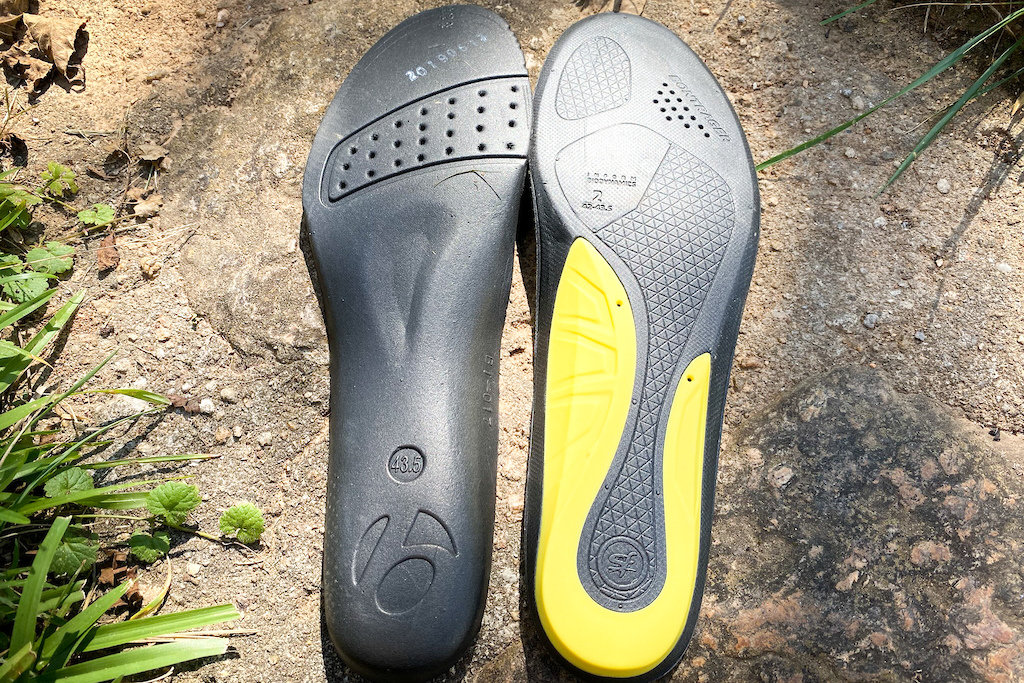
The insole from the factory (left) and Bontrager's inform BioDynamic Superfeet collab insole (right).
Issues
The stock insoles in the shoes are pretty basic and uninspiring, but Bontrager does make an aftermarket insole in collaboration with Superfeet. Fortunately, I had a pair on hand and threw them in after a number of rides and some discomfort. That did the trick, and once the switch was made I had no further issues.
It's understandable that a shoe insole is a personal choice and a lot of riders, especially those using a higher-end shoe such as the Triple X, are already going to have an insole that they are happy with that they may transfer over. I do believe, however, that if you're spending even half of what these shoes cost, they need to come with a little bit higher quality insole as it can make a huge difference in ride quality out of the box. Yes, it's a small thing to complain about, and it's not a deal-breaker, but it's important.
According to the team at Bontrager, "We recognize most riders at this price point prefer their own custom solution, similar to the running industry, for that perfect fit. For those that don’t have one already, we offer the Superfeet aftermarket option since they are the best. Plus it’s hard to determine the most common foot type is (high arch vs low arch) out of the box."
The only other qualm I have is that although there is pretty good traction from the lugs on the tread, it's lacking when it comes to grip on rocks, especially when they're wet. A softer rubber would offer a lot more traction and confidence when dealing with hazards.
The only other qualm I have is that although there is pretty good traction from the lugs on the tread, it's lacking when it comes to grip on rocks, especially when they're wet. A softer rubber would offer a lot more traction and confidence when dealing with hazards.
How Do They Compare?
Trek vs Specialized...a long time favorite match up. Both the S-Works Recon from Specialized and Bontrager's Triple X MTB shoe are top-notch performers. The Bontrager shoe is slightly stiffer, but it's lacking in the off-the-bike traction department, and the stock insoles could be better.
Specialized's Recon shoe has a lot more traction off the bike and a better rubber for getting about without feeling as if you're skating on ice, but I found its overall comfort, while good, isn't up to the same level as Bontrager's Triple X. The Recon also comes with a better insole and is pretty wearable right out of the box for most riders.
Which shoe is for you? Weigh the benefits of each for yourself and your riding style while remembering that it's going to be difficult to go wrong with either if you're looking for a top of the line, minimal compromise XC shoe.
Pros
+ Ultra light+ Ultra stiff
+ Excellent fit and comfort
Cons
- Poor off the bike traction- Budget insoles need upgrading
- The price
Pinkbike's Take
Author Info:
Must Read This Week
Sign Up for the Pinkbike Newsletter - All the Biggest, Most Interesting Stories in your Inbox
PB Newsletter Signup

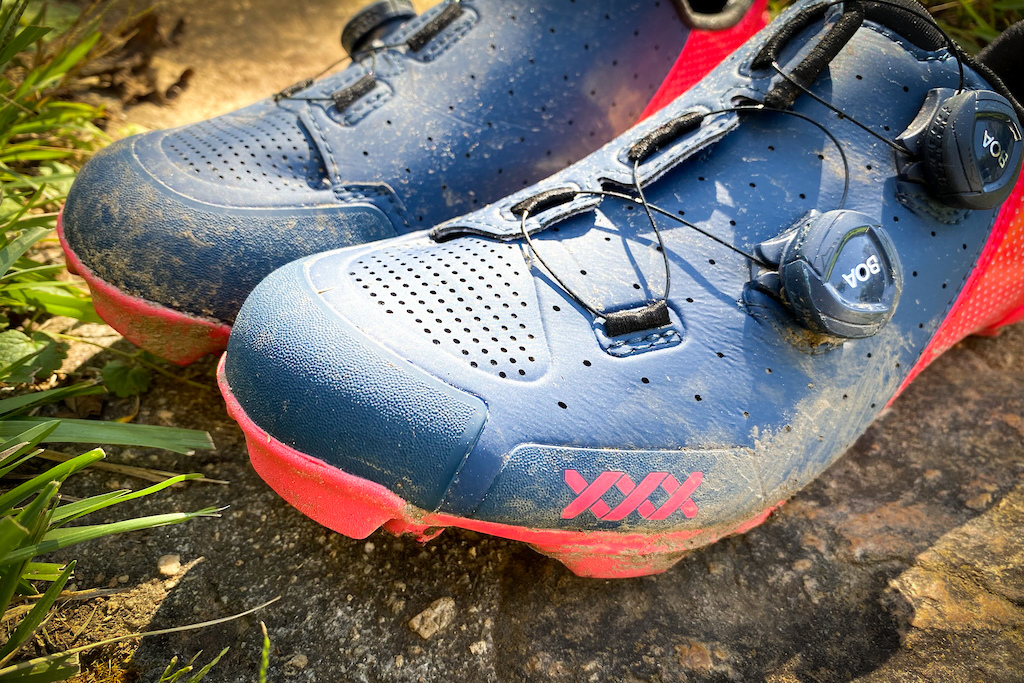
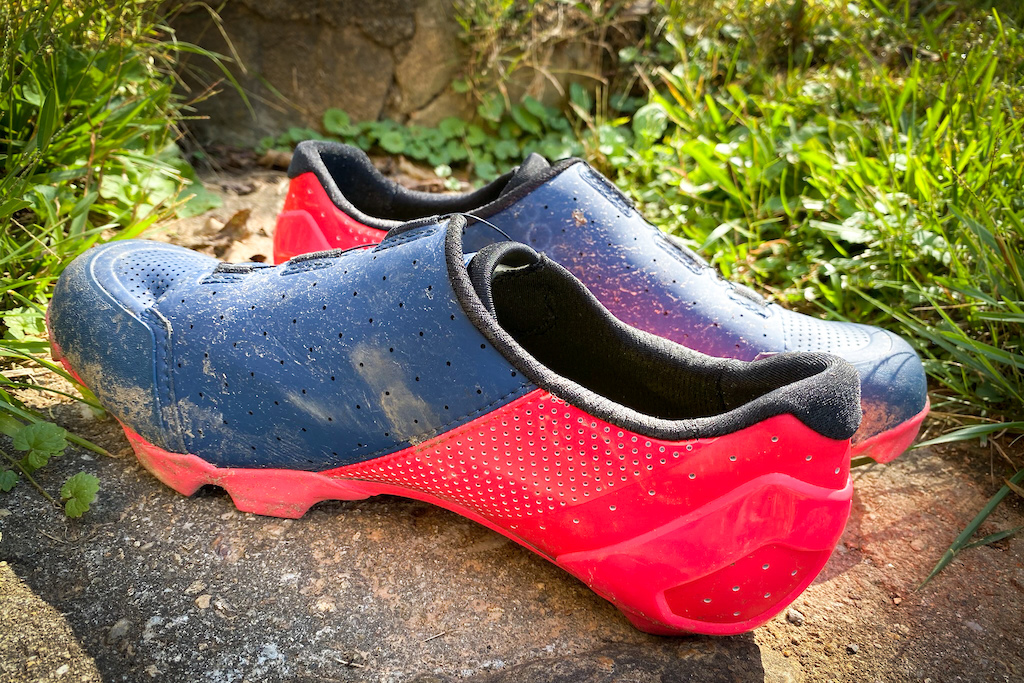
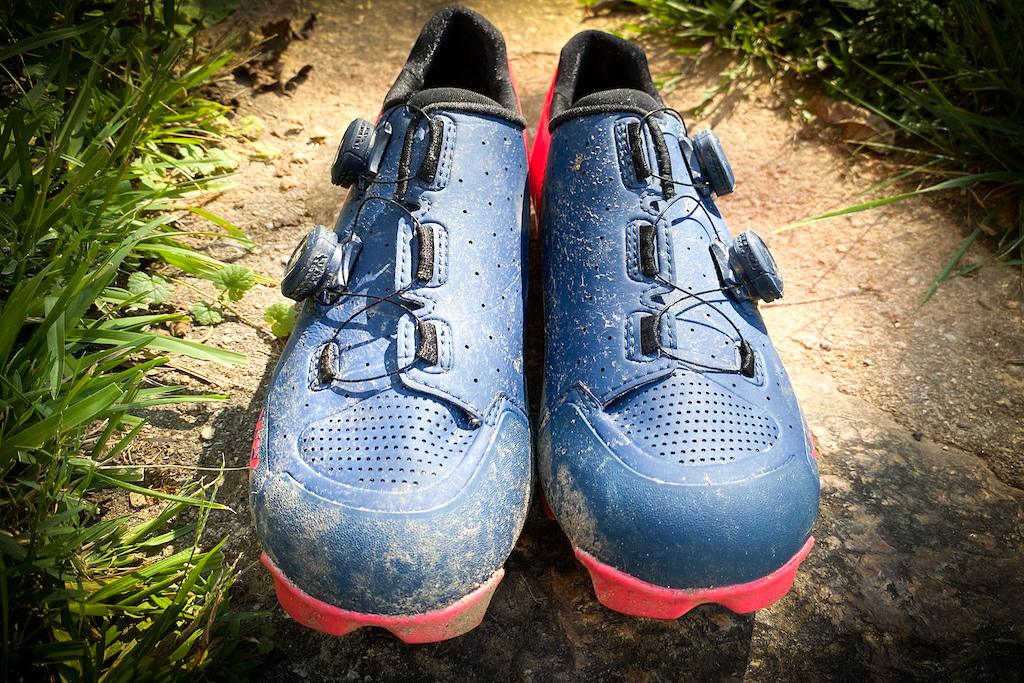
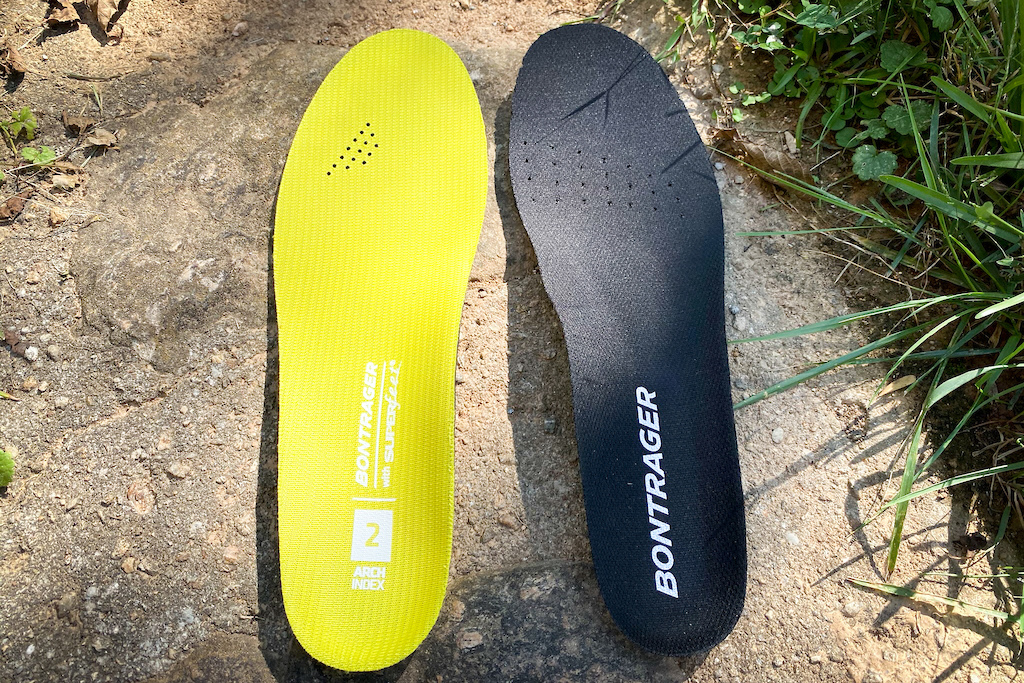
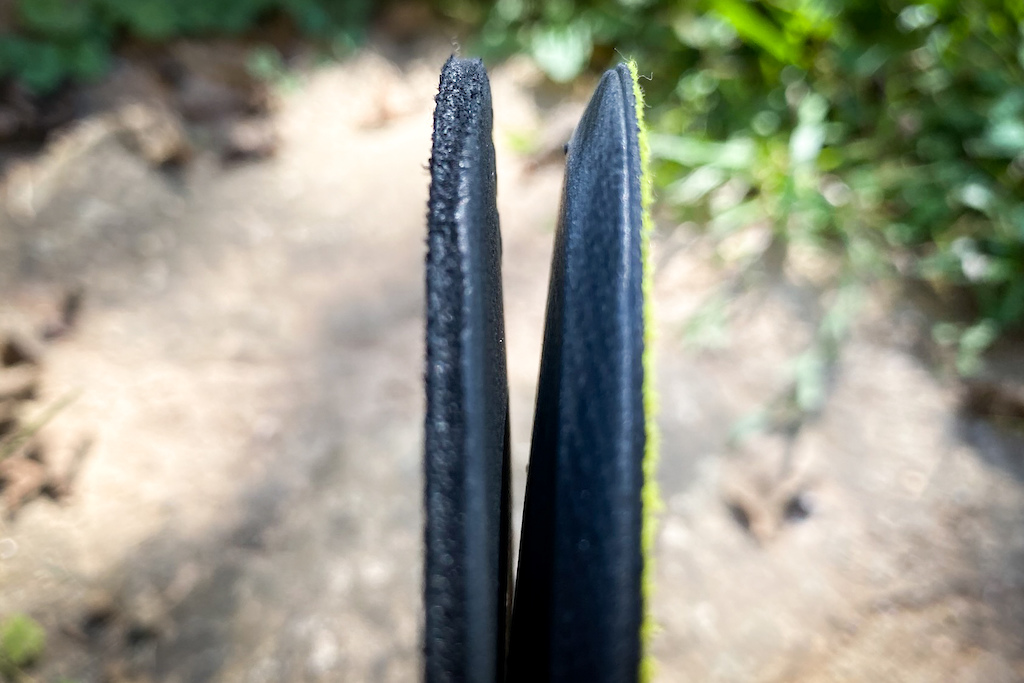
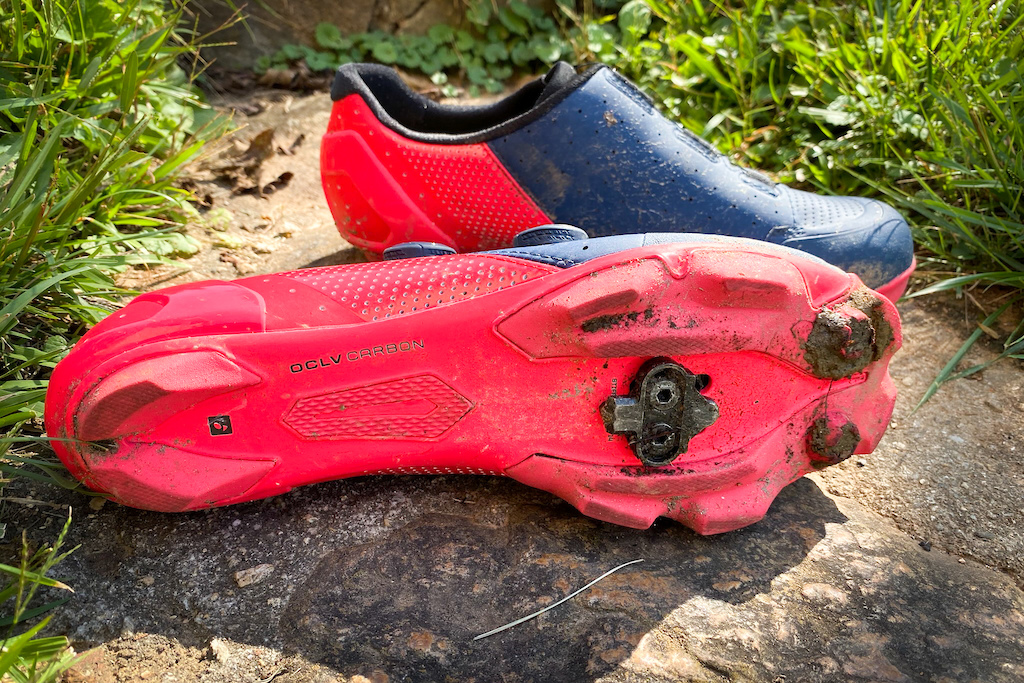
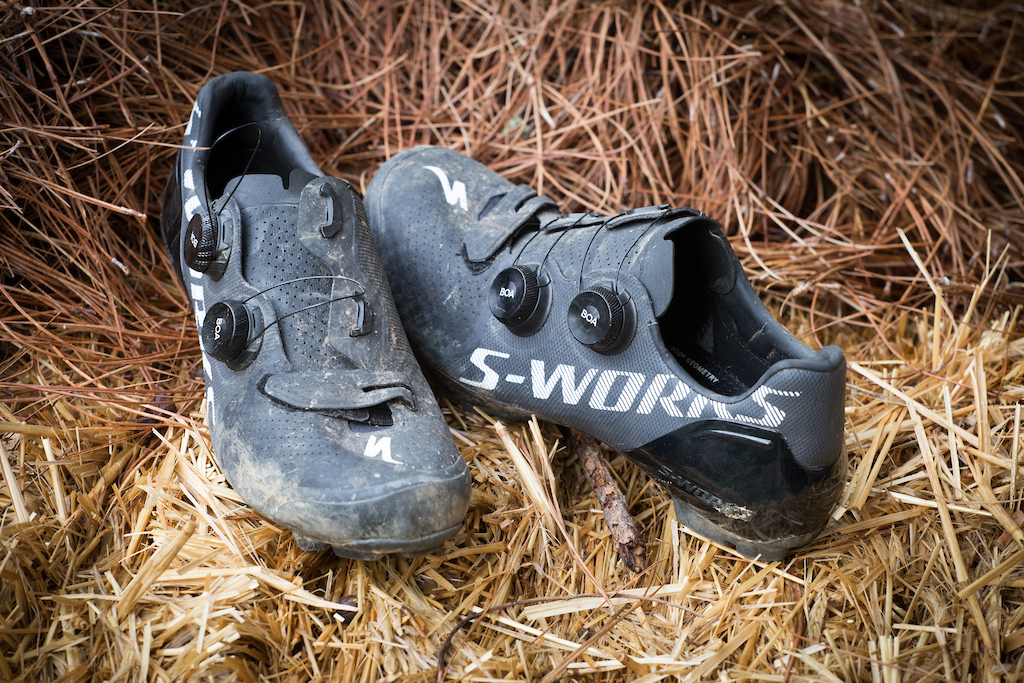

Subtle, aren't they? Get out of the office and get some air marketing boys.
It's not a compound problem with their traction, it is primarily a lug design problem.
All of the lugs are super skinny and long with long tapers (ie not squared off) to the web. That presents a very small rear biting edge, and the draft angle on the lugs make them want to "bite" even less than if they were squared off in the back. Also the surface area of the lug is low.
Just about the only thing they could have done to make them grip worse is to make cut outs in the face of the lug that don't extend/ drain to the edge of the lug. That way the lug would also want to trap mud and water and hydroplane...
It's pretty evident those lugs are designed to wear slowly and protect the cleat and not do much more well.
In my experience with various spd shoes, I found that Shimano offers by far the most incredible wearing comfort, but incredibly low quality outsole that gets destroyed by just thinking about walking in them.
Yup I’ve been enduroing the hell out of my me7’s
And it's for this reason that Bontrager nor any brand should waste too much money on the stock insole. No stock insole is as good as custom and invariably is taken out anyway. They should come with something ok, but nothing better than that as it will be a waste. Stock insoles are either the wrong arch height, or arch length, or stability or all of the above for most feet anyway.
Plus, a proper custom insole will last 2 or 3 shoes at least (provided your foot hasn't changed much during that time).
Custom footbeds aren't cheap but, as you know from ski boots, they can be a huge upgrade and are worth it for a lot of people.
Snagged a pair of the Lange XT 130 insoles from a buddies boot(he got footbeds) and this is actually a solid oem insole.
A good friend of mine is a multiple Olympic long distance runner and uses what ever comes in the shoe.
So for £400 you should get a decent start point.
Can you ride or ski without a proper insole? Yes, of course. Is it better? For the vast majority of flexible human feet, no. Can exceptions be found? Yes, of course. This is an area of general rules and lots of variables but if you have ankle/knee/hip pain and/or care about alignment/efficiency/power transfer then you should be looking into proper insoles for biking and for skiing. Not doing that would just be a waste of your time and money.
US $400, that's almost AU $600. It's not unheard of. But neither is paying for a can of "mountain" air.